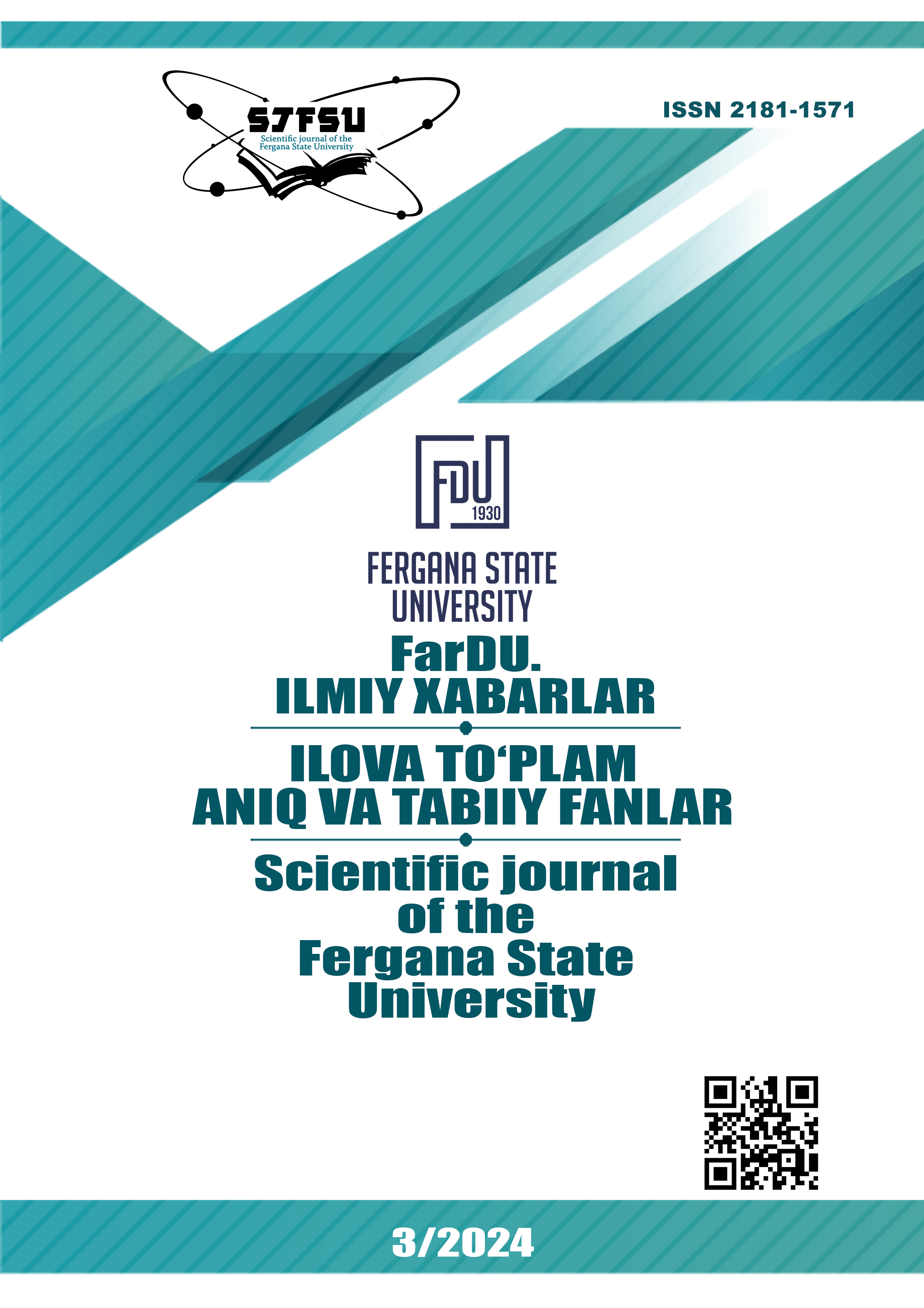STUDY OF FLAVONOID CONTENT OF XANTHOPARMELIA CONSPERSA AND XANTHORIA ELEGANS LICHENS
Main Article Content
Abstract
Interest in extracting flavonoids from natural sources is increasing every year due to their wide range of benefits for the human body. The fact that flavonoids determine the antioxidant properties of plants is another important reason for studying flavonoids in natural sources. For this reason, in the course of a study using high-performance liquid chromatography (HPLC), the qualitative composition of flavonoids in the lichens Xanthoparmelia conspersa and Xanthoria elegans, growing on the territory of our Republic, was studied. As a result of research, it was found that the lichen Xanthoparmelia conspersa contains robinin, rutin, hypolaitin, hyperazide and quercetin, and the lichen Xanthoria elegans contains flavonoids such as robinin, rutin and hyperazide. This, in turn, opens up the prospect of using these lichens as antioxidants
Article Details

This work is licensed under a Creative Commons Attribution-NonCommercial-NoDerivatives 4.0 International License.
References
NYBAKKEN, L., SOLHAUG, K. A., BILGER, W. and GAUSLAA, Y. (2004): The lichens Xanthoria elegans and Cetraria islandica maintain a high protection against UV-B radiation in Arctic habitats. Oecologia, 140(2): 211-216. https://doi.org/10.1007/s00442-004-1583-6
Sulaymonov E.S., Haydarov X.Q., Hasanov M.A., Jalolov X.H., Axmedov A.Q., Toshpo‘latov Y.Sh. Botanika fanidan qo‘llanma. «TAFAKKUR BO‘STONI» TOSHKENT-2015
Zeynep KARAAHMETa, Kadir KINALIOĞLUb, Sinem AYDIN* Antioxidant and Antibacterial Potencies of Xanthoparmelia conspersa (Ehrh.exAch.) Hale and Dermatocarpon miniatum (L.) W. Mann. Lichens from Black Sea Region in Turkey. 2019
Joel Boustie & Martin Grube (2005). Lichens — a promising source of bioactive secondary metabolites, Plant Genetic Resources3(2); 273–287 DOI: 10.1079/PGR200572
Ayse Tokgoz, Bugrahan Emsen & Muhammet Dogan To cite this article: Ayse Tokgoz, Bugrahan Emsen & Muhammet Dogan (2023) Allelopathic effects of some lichens on growth and antioxidant activities of in vitro propagated Bacopa monnieri (L.) Wettst, Journal of Taibah University for Science, 17:1, 2229595, DOI:10.1080/16583655.2023.2229595. https://doi.org/10.1080/16583655.2023.2229595

